I’ve been doing heaps of DIY this summer, building up my repertoire of things I can make at home. Starting with homemade shampoo and conditioner bars, lotion and even my own sunscreen!
Not only is it great knowing exactly what makes up the products that you use on your body, but I feel much more informed since I started making these things myself. What started as a means to make things without plastic has turned into a whole new educational experience of its own! I’m beginning to understand the chemistry behind soaps, creams and cleaners and question how their widespread use affected the environment and the more research I do, the more I feel like I’ve been fooled.
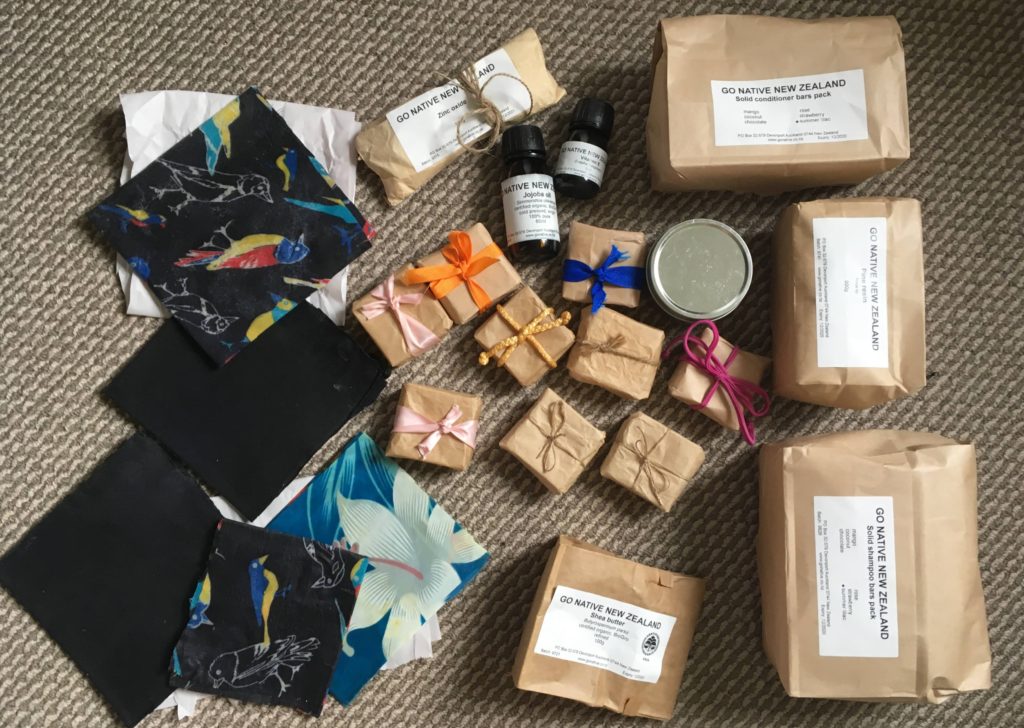
Various ingredients found in the things we use in our daily life are polluting our environment in a multitude of ways but yet it doesn’t seem to concern the majority of the public, who still use these products. Maybe it is because they are unaware that the very products that have been marketed and advertised to them as ‘the best’ are actually ‘the worst’ for the environment! Or it could be that the impact of these everyday things are overshadowed by the sheer magnitude of problems we already hear about on repeat; the climate emergency including the ice caps melting & sea levels rising, droughts and uncontrollable bush fires, over-fished oceans and deforested lands, incurable viruses, cancers and poverty, etc.
I think often we tend to think about our everyday lives as independent from worldwide issues, yet they are all very much interconnected.
Its not ‘new’ news: we inhale toxic fumes and microplastics daily. Of course this varies entirely based on the environment you’re exposed to – but did you know that many household products from perfumes to paints, not excluding pesticides, cleaning agents and other scented consumer items – all give off chemical vapours? These vapours, called volatile organic compounds (VOCs), are what react with sunlight to form ozone pollution which often appears in the form of smog. And don’t get me started on aerosols- in summary, they release lots of of VOCs and while they phased out ozone-depleting chemicals, chloroflurocarbons (CFCs), in the 1900’s modern aerosols still contain hydrocarbons and/or compressed gases well known for their contribution to global warming. You could be lowering your carbon footprint just by refusing to use aerosols when you have an alternative.
On the other hand, these things that we use on our bodies can have even more significant impacts not just on the environment but direct impacts on our health as they can be inhaled, absorbed through the skin and enter our bloodstream.
Whilst there is already so many pressures on the environment we have to worry about, I want to make sure that my method of sun protection won’t be a threat to marine life as well and I’m concerned because a lot of the sunscreens out there have chemicals which can cause corals to bleach.
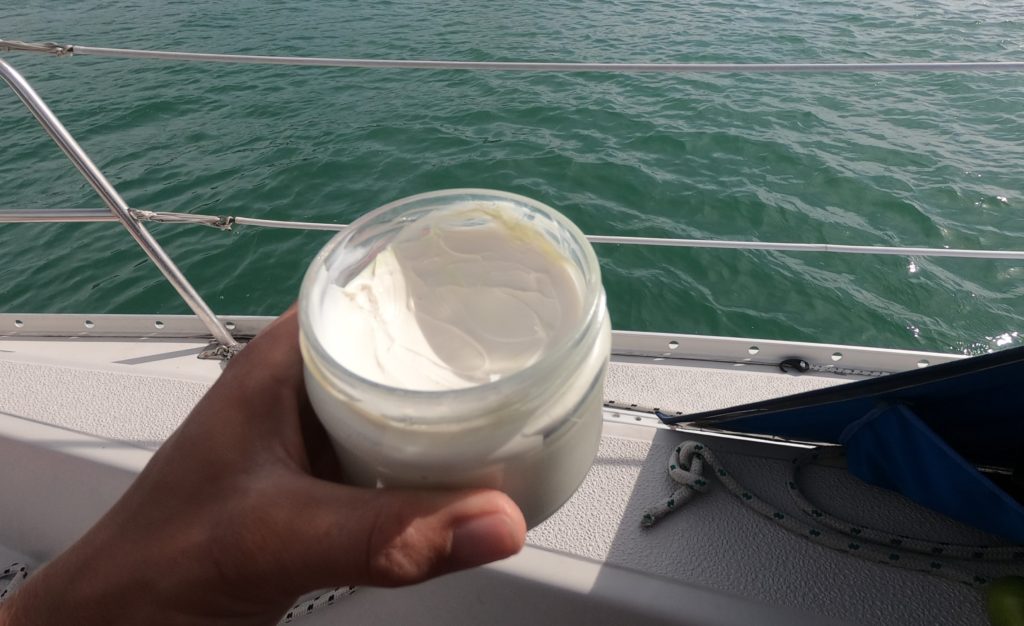
Whats the story with sunscreen?
Well its summertime in the southern hemisphere and you need to be protected from the rays when you’re out and about in New Zeland. Sunscreen has the potential to affect your health, but then again, not wearing sunscreen could affect your health too!
Let me start by recognizing that all ultra violet radiation has been shown to cause various types of tissue damage and there is good evidence to support the fact that sunscreen prevents skin cancer. It does so mostly because it prevents us from burning by protecting us from harmful UV rays. However there are other ways to protect yourself and different kinds of sunscreens, they are not all created equal. The two types of sunscreen that do this are either a physical or a chemical sunscreen.
‘Physical’, also referred to as inorganic sunscreens, contain either titanium dioxide or zinc oxide reflect and scatter ultraviolet (UV) radiation from the sun away from the skin. Titanum dioxide (TiO2) and Zinc oxide (ZnO) are known as ‘photocatalysts’ which are a key part in the reaction that results in the decomposing detrimental UV rays.
‘Chemical’ or organic sunscreens contain chemicals that absorb the sun’s ultraviolet rays and block the skin from harmful radiation by converting the rays into a safer level of radiation. Oxybenzone is common sunscreen ingredient which has acts as a hormone disrupter; a chemical that has the ability to cross cell membranes and can interfere with the body’s natural hormone production, basically confusing the body’s systems.
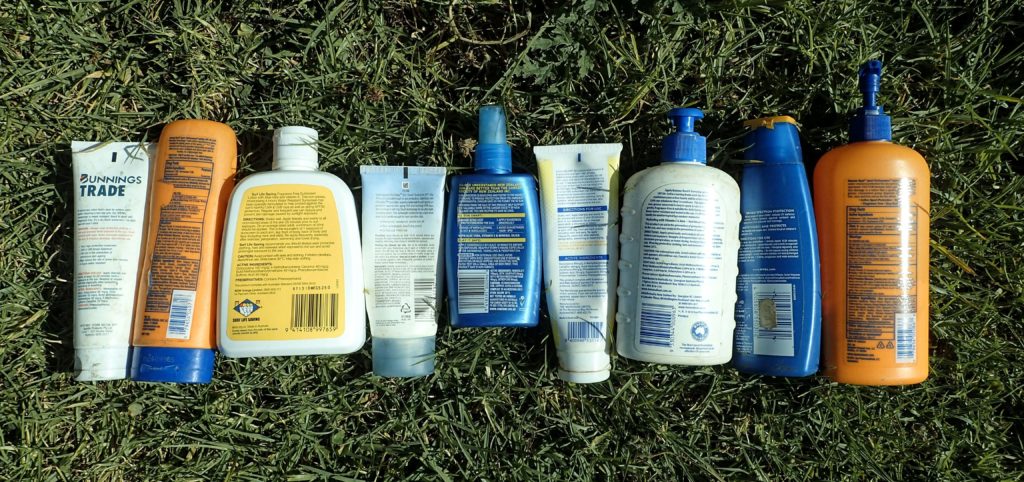
Oxybenzone is toxic to much more than just corals; it’s toxic to algae, sea urchins, fish and mammals. It inhibits embryonic development in sea urchins, can cause gender shifts in fish, and in mammals its been identified as a potential mutagen. And the scary part is that oxybenzone can be absorbed into the bloodstream (detectable in plasma) and can be detected in urine within 30 minutes of application and up to 24 hours (0r more) after use! I don’t mean to single out Oxybenzone (benzophenone-3), but it is a really common sunscreen ingredient which has been shown to negatively impact coral, however so do these; Ethylparaben, Octinoxate (octyl methoxycinnamate), Butylparaben, Octocrylene, 4-methyl-benzylidene camphor, Benzylparaben, Triclosan, Methylparaben, Phenoxyethanol. I like to be able to pronounce the names of the ingredients in products I use. These are chemicals which scientists are concerned with interacting negatively with all marine life but especially with coral reefs.

I was astonished to learn that a singular drop of Oxybenzone in 4.3 million gallons of waters is enough to kill coral. So in my opinion, finding a reef safe sunscreen and using more environmentally friendly products are really quite important no matter how near or far you may be from coral.
Lots to learn
When I first made sunscreen at home I was still under the impression that my homemade zinc-based sunscreen would be totally ‘reef safe’ and harmless just because its was zinc based and contains no chemicals. Turns out I hadn’t done enough reading then because an Ethique blog post really helped me understand that zinc-based sunscreens could be just as harmful to reefs and their chemical sunscreen counterparts… it turns out the negative impact could be largely dependent on the size of the ZnO and TiO2 particles and whether they are modified/coated.
I learned that the shape and size of ZnO and TiO2 articles affects the degree of sun protection; the smaller particles have better SPF protection but less UVA protection. Small particles provide greater transparency but larger particles offer greater UVA protection! The good news is that the form of zinc oxide most often used in sunscreens is larger and provides greater UVA protection than titanium dioxide products that appear clear on skin.
However both ZnO and TiO2 can be micronized; a process called micronizing breaks up larger particles resulting in nanoparticles.
Some sunscreens use nanoparticles because this makes the sunscreens easier to apply and allows them to rub into the skin, in contrast to a greasy, chalky white paste that leaves you looking like a ghost.
Craig Downs, Ph.D explains that Noncoated nanoparticles (less than 35 nanometers in diameter) are a threat to marine life because of their miniscule size and their interaction with cells, which means they too can trigger coral bleaching. The positive news is that non-nanoparticles (commercial designation above 150 nanometers in diameter) and coated zinc oxide and titanium dioxide don’t readily exhibit acute toxicities whilst uncoated zinc oxide was shown to cause rapid and severe bleaching.

I learned so much more from Downs through this paper which discusses in detail the responses sunscreen have to coral, and it really helped me understand the ways in which the coral and zooxanthellae react to a variety of common sunscreen ingredients, including zinc! Then I got wrapped up reading another article with more information on coral bleaching and found these interesting figures.
One of the ways coral react, when exposed even to very low quantities of sunscreen ingredients, is by releasing of “large amounts of coral mucous (composed of zooxanthellae and coral tissue) within 18–48 hr, and complete bleaching of hard corals within 96 hrs.”
These figures helped me understand the corals response and so I thought I’d share them but all credit for the scientific information goes to the scientists that wrote these papers up and schooled me in sunscreen science! For more check out this nice and lengthy document.
Whats in my Sunscreen?
There’s a few simple ingredients, you melt them together, mix it up, let it cool and apply! I cannot comment on the SPF rating of my homemade sunscreen, because its not tested but the individual ingredients have estimates of their SPF rating.
Almond oil: SPF ~ 5
Coconut oil: SPF 4-6
Shea butter: SPF 4-6
Carrot seed oil: SPF 35-40
Zinc oxide or titanium dioxide: SPF 2-20 depending on how much is used.
Red raspberry seed oil: SPF 25-50

I have to put a disclaimer here: homemade versions of sunscreen may not have as high (or broad spectrum) SPF or protect as fully against UVA and UVB rays compared with store bought, lab tested sunscreens…. I guess I’m just saying we are both taking a chance, I just think it will be alright if you are ok with not having an exact SPF measurement for your homemade sunscreen and you cover up appropriately and wear a hat. Be sun smart!
So its difficult to accurately estimate what the SPF of your homemade sunscreen is but knowing the amount of SPF the ingredients have is reassuring!
These ingredients were relatively easy to find and I hope to have made it easier for you because I even hyperlinked to the specific products I used mostly bought from an awesome kiwi business, Go Native. My favourite thing is that their products come in plastic free packaging! And you can find everything you need on their site, really handy for you if you are based in New Zealand!
How to make your own
This is the sunscreen recipe I used which makes about a cup of sunscreen. I adapted this one from the Wellness Mama blog.
Ingredients:
½ cup almond oil
¼ cup coconut oil
¼ cup beeswax
3 TBSP shea butter
1 tsp vitamin E oil
1 tsp carrot seed oil
1 tsp red raspberry seed oil
2 TBSP zinc oxide
To put it all together:
1. Combine all the ingredients except the zinc oxide in a glass jar or bowl.
2. Fill a medium saucepan with a couple inches of water and place on the stove over medium heat.
3. Place the bowl or jar it in the pan with the water, place a plate over the bowl or a cover loosely over the jar to prevent water vapor getting into your mixture.
4. Stir occasionally to mix the ingredients as they melt.
5. When all the ingredients are completely melted take off the heat and, stir in the zinc oxide (use caution not to inhale the zinc) and pour into whatever jar or tin you will use for storage.
6. Stir a few times as it cools to make sure zinc oxide is incorporated then transfer to small jar or tin.
I spend a lot of time outdoors and its very rare you will see me without a hat. I take the precaution to protect my face and try to wear clothing that protects me during prolonged sun exposure but where I can’t cover up – I use this and its done me proud. By making my own I also get to store it in a re-used non-plastic container (I have found some great little tins at op shops)!
This sunscreen is not going to be water resistant, and although it seems to last a while, it wont last all day so do make sure you reapply especially after going in the water!
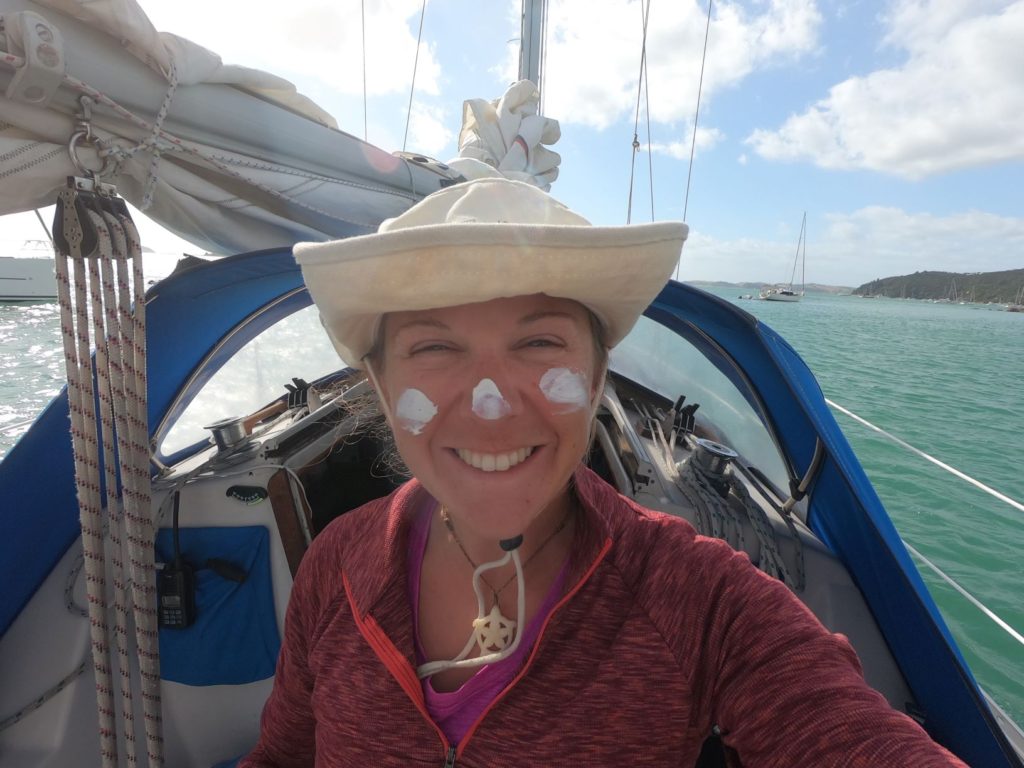
P.S. Have fun out there in the sunshine!
References:
Roberto Danovaro, Lucia Bongiorni, Cinzia Corinaldesi, Donato Giovannelli, Elisabetta Damiani, Paola Astolfi, Lucedio Greci, and Antonio Pusceddu Sunscreens Cause Coral Bleaching by Promoting Viral Infections. Environmental Health Perspectives. Vol. 116, No. 4 Published:1 April 2008 https://doi.org/1Vol. 116, No. 40.1289/ehp.10966
Fel, J., Lacherez, C., Bensetra, A. et al. Photochemical response of the scleractinian coral Stylophora pistillata to some sunscreen ingredients. Coral Reefs 38, 109–122 (2019).
https://doi.org/10.1007/s00338-018-01759-4

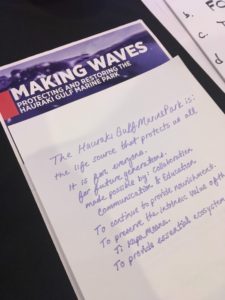
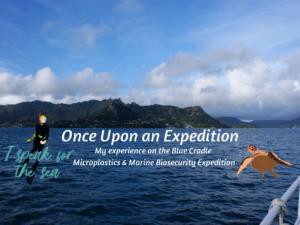
Thank you for this very informative article and for your sunscreen recipe!
I’ll be trying it for sure!
Nice article! Thank you!